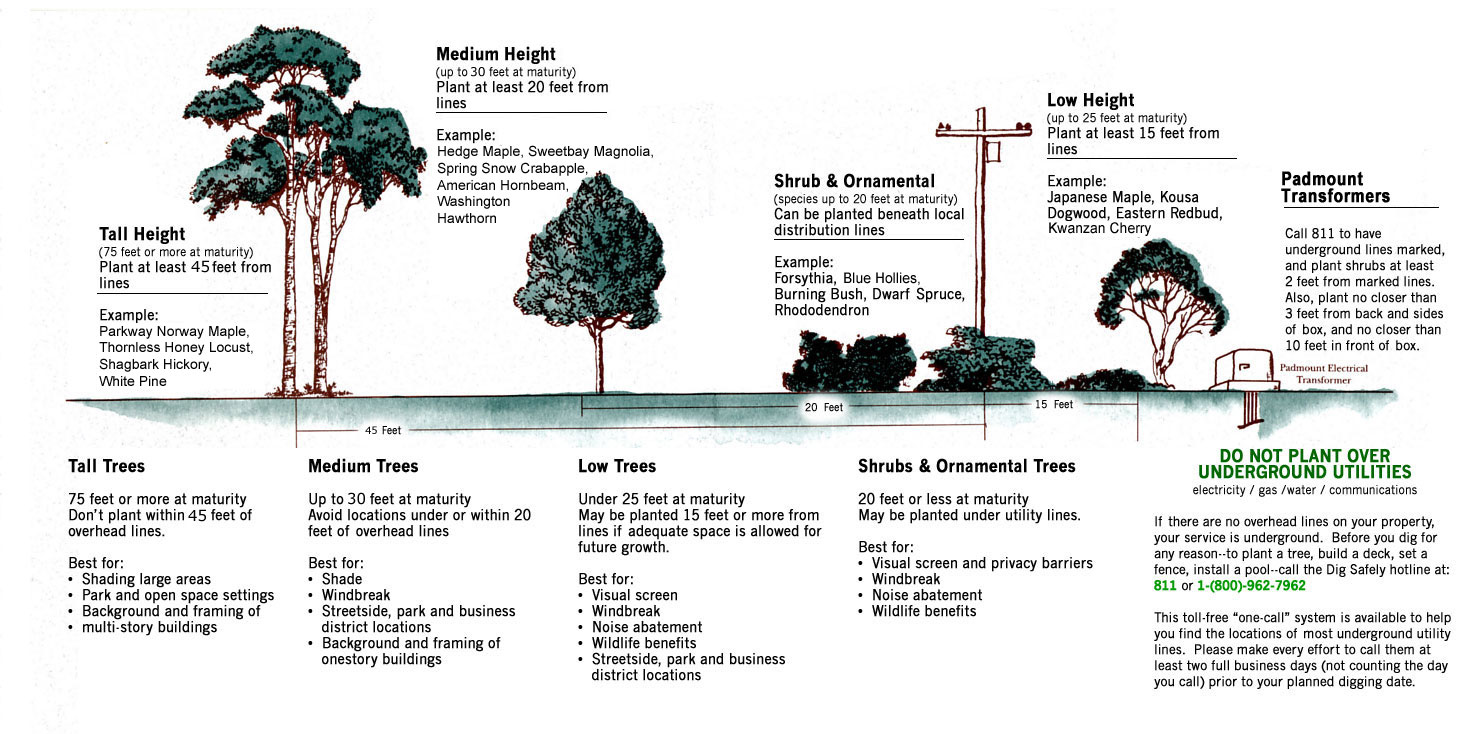
Tree Planting Guide
When planting trees near utility lines, Central Hudson encourages residents and municipalities to plant the appropriate species. Tall growing trees planted directly beneath or adjacent to power lines may eventually grow into the wires and will require line clearance cutting, or even removal. When you plant a tree, consider the location carefully so the chance for future utility service interruption is minimized. Your interests and Central Hudson’s are best served when you select plantings that do not interfere with their surroundings, including electric lines.
When planting near power lines
Trees reaching more than 30 feet at maturity should be planted at least 45 feet from lines, and those reaching 30 feet or less should be planted at least 15 to 20 feet from lines (see illustration, below). When planting in the proximity of power lines, choose a species that has upright branches and a narrow crown. Also, avoid planting softwood trees (such as pines and willows), as these are susceptible to storm damage and may fall onto the power lines. Remember, even if trees are plant according to these guidelines, trimming may be necessary if branches grow into or endanger the electric wires.
When planting under power lines
Smaller trees and shrubs under 20 feet are appropriate for planting directly under lines, although some trimming may still be required if branches should grow in the lines. No trees of any size should be planted in transmission easements.
Before Planting – Call Before You Dig
Residents are also reminded to call 811 before planting so that underground utilities in the area can be located and marked out. Making this call is essential, as contact with underground facilities not only interrupts vital utility services, but may also cause injury, or even death, to those digging. Always call before you dig 2 to 10 days before planting, and wait until all lines have been marked out.
Around Pad-Mounted Transformers
Some businesses and residents may have a green box, about three feet square, that supplies their electricity. Planting near these boxes can be dangerous, as they are connected to high voltage electric lines underground. Also, electric crews require access to these boxes to conduct repair and maintenance activities.
The root systems of trees can interfere with the underground electric wires the run to and from these boxes. Shrubs are a better choice, however the 811 Call Before You Dig center must be contacted and underground lines marked out before any planting can take place.
Shrubs may be planted at least two feet from marked lines. They must also be no closer than three feet from the back and sides of the box, and at least 10 feet from the front of the box to allow access by utility crews.

(Click to view full image)
Planting for energy efficiency
Trees serve as a source of natural shade in the summer, and can block cold winds in the winter, helping to reduce the amount of energy used to keep cool and warm, up to 20 percent. Consider deciduous trees on the south, east or west side of the house or building – their leaves will create a cooling shade in the summer, and their bare branches will allow warming sunlight to pass in the winter. Evergreen trees planted on the north side will block cold winter winds. Shrubs, planted four to five feet from the foundation wall, will also help to insulate the home during all seasons. As with all plantings, remember to consider the location of power lines, and always call 811 before you dig.


